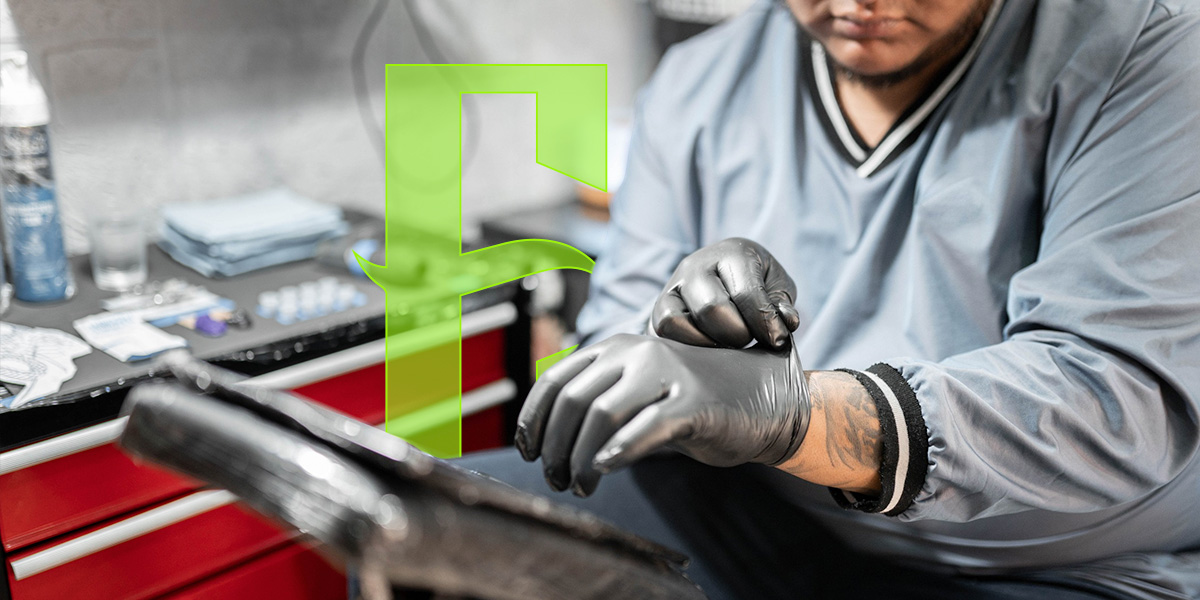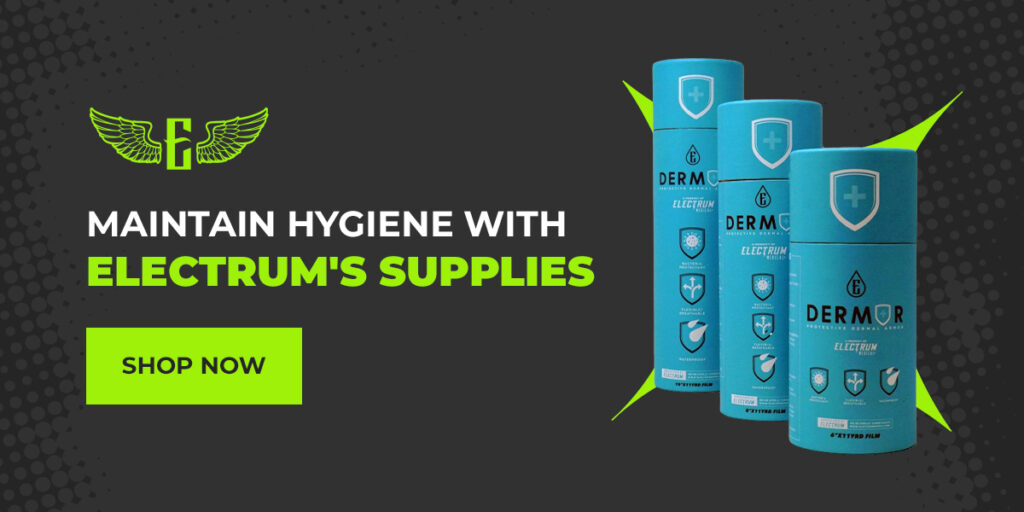
Ink With Confidence: Navigating the Depths of Tattoo Safety and Hygiene
Tattoos have evolved from counter-cultural symbols to mainstream expressions of personal stories and art. As the popularity of body art continues to rise, it’s paramount to dive into the crucial aspects of tattoo safety and hygiene. Beyond the allure of ink lies a commitment to ensuring a safe and clean canvas for the tattoo artist and the recipient.
Understanding the Risks:
Before getting into the specifics of tattoo safety standards, it’s essential to understand the risks involved during the tattooing process. These include:
- Infections: Infections are caused by bacteria and viruses entering the skin during tattooing. Improper tattoo hygiene standards can lead to the transmission of serious diseases such as HIV and hepatitis C.
- Allergic reactions: Some individuals may react to certain types of inks, latex, metals, or other materials used in tattooing.
- Cross-contamination: If equipment is improperly sanitized, pathogens can spread from one client to another.
Sterilization: The Foundation of Safety:
Sterilization is the cornerstone of tattoo hygiene. Reputable tattoo studios prioritize using sterilized equipment, including needles, tubes, and grips. Autoclaves, which use steam to kill bacteria, viruses, and fungi, are the gold standard in ensuring that all instruments are free from contaminants. Some tattoo studios use ultrasonic cleaners for sanitization. These devices use high-frequency sound waves that form tiny bubbles in a liquid solution through a process known as cavitation. The sound waves cause the bubbles to implode and generate powerful jets of liquid that dislodge dirt, grease, or other contaminants.
When designing your workspace, carefully considering materials is critical to enhancing daily tattoo hygiene standards. For example, choose materials like glass or stainless steel for worktable surfaces where machines are placed during tattooing. Such materials are easy to disinfect. Avoid using wood, as it may contain crevices in the grain that can hide bacteria, making it difficult to sterilize. Walls and floors should also be easily washable.
Single-Use, Disposable, and Quality Tools:
Disposable tools, such as needles and grips, are standard in professional tattoo studios. Single-use items eliminate the risk of cross-contamination between clients. Quality is non-negotiable; reputable artists invest in high-grade, industry-standard tools to ensure precision and safety. It’s also a good practice to ensure the area used for keeping single-use, sterile, or ultra-clean equipment is dry and dust-free. This applies to inks and fluids used in tattooing as well. Opt for cabinets with doors to protect materials from contamination.
Personal Protective Equipment (PPE):
Tattoo artists adhere to strict PPE protocols, including disposable gloves, face masks, and aprons, to safeguard themselves and their clients. The meticulous application of PPE helps create a barrier between the artist and the client’s blood and bodily fluids.
Cleanliness Beyond Instruments: Studio Maintenance:
Maintaining a clean and organized studio is an aesthetic choice and a fundamental aspect of tattoo safety. Surfaces, furniture, and waiting areas should be regularly disinfected. An immaculate studio reflects professionalism and minimizes the risk of infections. Establishing a separate work area from the cleaning zones for machines and tubes is essential to prevent cross-contamination. While a completely separate room isn’t necessary, there should be a clear division to maintain good tattoo hygiene standards.
Skin Preparation and Aftercare Guidance:
Before tattooing, artists prepare the skin by cleansing it thoroughly to avoid infections. The application of antiseptic and ointments after tattooing is also necessary. Ointments play a vital role, creating a barrier that keeps out bacteria and other pathogens as the skin heals. The artist must provide clear and comprehensive aftercare instructions after the tattoo session. This guidance includes information on cleaning the tattooed area, applying ointments, discerning various signs of an infection, and avoiding activities that could compromise the healing process, such as exposure to sunlight, swimming, or picking at scabs on a healing tattoo.
Safe Ink Practices:
Using safe and reputable tattoo inks is paramount. High-quality inks are free from harmful substances, ensuring the longevity and vibrancy of the tattoo while minimizing the risk of allergic reactions. Professional artists carefully select their ink brands, often opting for those with a proven track record of quality and safety.
Client Consultation: The First Step to Safety:
The artist must conduct a thorough client consultation before the tattooing process begins. The consultation involves discussing any pre-existing health conditions, allergies, or medications that might impact the tattooing experience. Open communication ensures that the artist is well-informed and can make necessary adjustments.
Infection Control Measures:
Tattoo artists are well-versed in infection control measures, including handwashing, glove changing, covering surfaces with cling film, and disposing of single-use items in designated biohazard containers. Rigorous adherence to these measures is non-negotiable in maintaining a safe and hygienic tattooing environment.
Regular Health Screenings:
Maintaining sanitary tattoo rules in the studio also involves performing frequent health screenings whenever possible. Tattoo artists should ensure they are free from bloodborne pathogens by undergoing regular checks. Clients should also be screened for underlying health conditions or skin infections that may affect the process. Intoxicated clients must be turned away, as alcohol is a known blood thinner that can cause excessive bleeding during tattooing.
Additionally, tattooing an intoxicated individual may lead to legal issues when they sober up and decide to press charges for an artist tattooing them while they were not in the right state of mind. To avoid any legal problems, even with sober clients, it’s helpful to ask everyone to sign release waivers before applying any tattoos.
Importance of Age Verification:
Many states do not allow the tattooing of minors, especially without parental consent. Seventeen states outrightly prohibit the tattooing of minors even with parental consent. It is vital to establish the age of every client before beginning the tattooing process to avoid legal issues and stay compliant with state laws. Be aware of the different states’ requirements for tattooing minors to uphold compliance.
Continual Education and Certification:
Professional tattoo artists prioritize continual education and certification in safety and hygiene practices. Staying abreast of the latest industry standards, sterilization techniques, and health regulations is crucial in providing clients with the highest level of safety.
Tattooing is a dynamic art form that demands an equally active commitment to safety and hygiene. By prioritizing sterilization, single-use tools, PPE, and client education, the tattoo industry maintains a standard that ensures the longevity and vibrancy of the art and, more importantly, safeguards the well-being of both the artist and the canvas. As enthusiasts embark on their tattoo journeys, understanding and advocating for these safety practices is critical to a positive and risk-free tattooing experience.
Maintain Hygiene With ELECTRUM’s Supplies
At ELECTRUM Tattoo Supply, we take a safety-first approach to tattooing, and you can too. Equip yourself with the finest hygiene and safety supplies in the market. Ink with confidence while knowing you’re backed by the best in the business. Explore our range of products or connect with us online to learn more.

Facebook
Twitter
LinkedIn